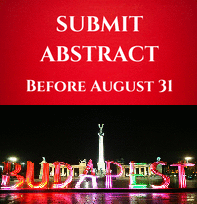
Claudia Lenk
Technische Universität Ilmenau, Germany
Title: Episodic occurrence of atrial fibrillation as result of interacting sources and small conduction pathways
Biography
Biography: Claudia Lenk
Abstract
A major risk of stroke is atrial fibrillation (AF), the most common cardiac arrhythmia in clinical practice in the industrial countries [1]. Paroxysmal AF, characterized by the alternation of fibrillation episodes with normal sinus rhythm, complicates AF detection and thus stroke prevention.
A proposed mechanism for the intermittent occurrence is the interaction of excitation waves from two different sources, called pacemaker, located in separate regions [2]. The primary pacemaker represents the sinus node in the right atrium while the secondary one represents a self-excitatory source in the left atrium such as an ectopic focus or reentrant wave. The pacemaker’s waves can only get in contact through a small bridge resembling conducting pathways between the atria. Results from the CONFIRM trial [3] support the hypotheses of a perturbing source as generating mechanism of AF.
In this talk we present results from modeling studies based on two different electrophysiological models [4] and relate them to experimental results. The FitzHugh-Nagumo (FHN) model is a generic model with unphysiological action potential shape and restitution properties. More realistic is the model of Bueno-Orovio, Cherry and Fenton (BOCF-model), which we adapted to atrial electrophysiology.
Three different types of irregular patterns are observed in the FHN model whereas in the BOCF model only one type was present [4]. However, for a reduced excitability in the BOCF model corresponding to a reduced sodium channel conductance not only the three types of fibrillatory-like patterns are recovered but also another type is observed. This one is caused by a partial conduction block of the waves at the bridge as was described for experiments on rapid pacing of Bachmanns Bundle [5]. Furthermore, the strength of irregularity is increased compared to the other types.
Which type of fibrillatory-like pattern occurs is determined by the pacemakers frequencies. Thus, these studies propose an explanation for the episodic occurrence of paroxysmal AF which does not require any tissue heterogeneities. Changes in the frequency can trigger AF episodes, which might explain why AF episodes occur for some patients when they are resting and for others while they are active or stressed.

